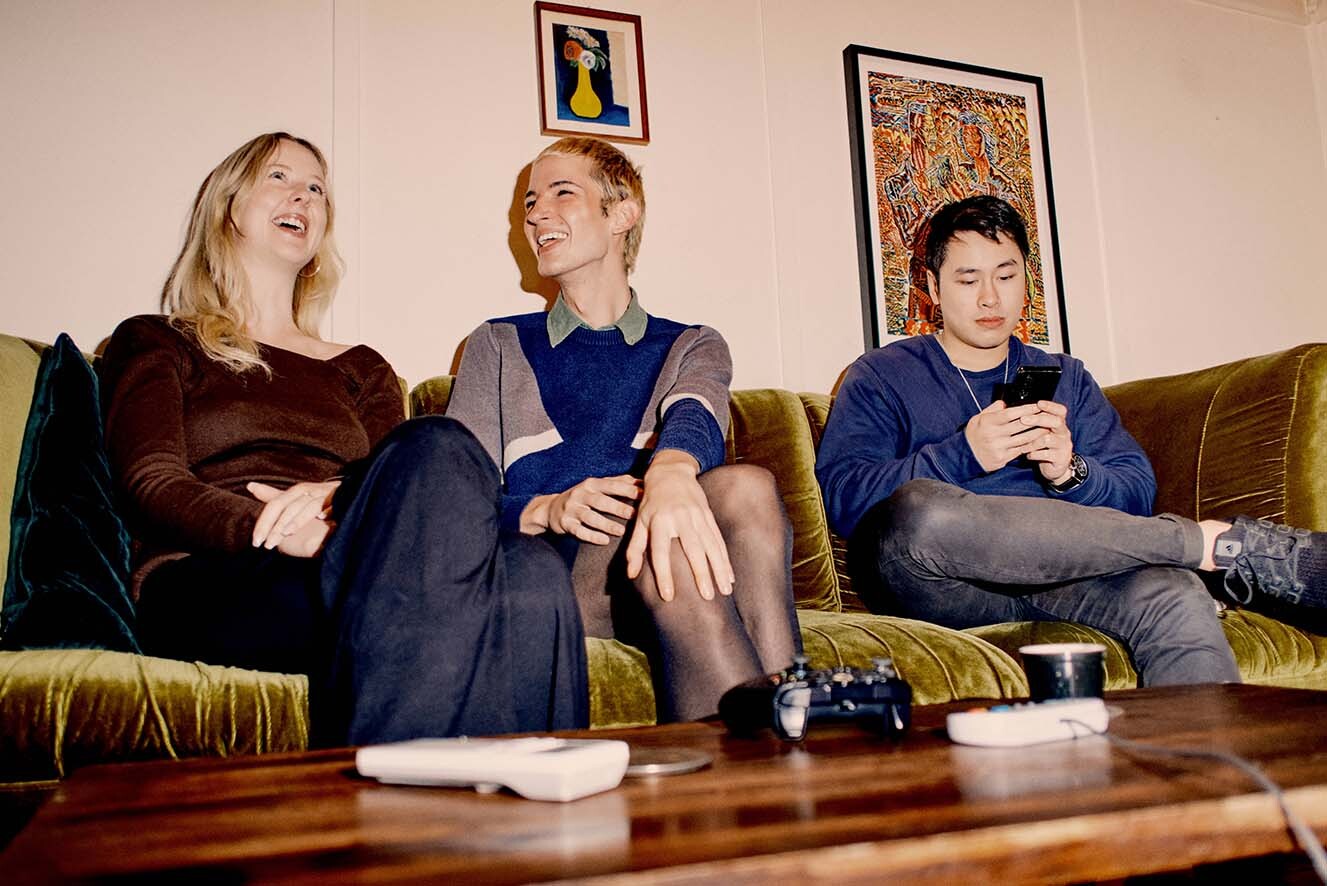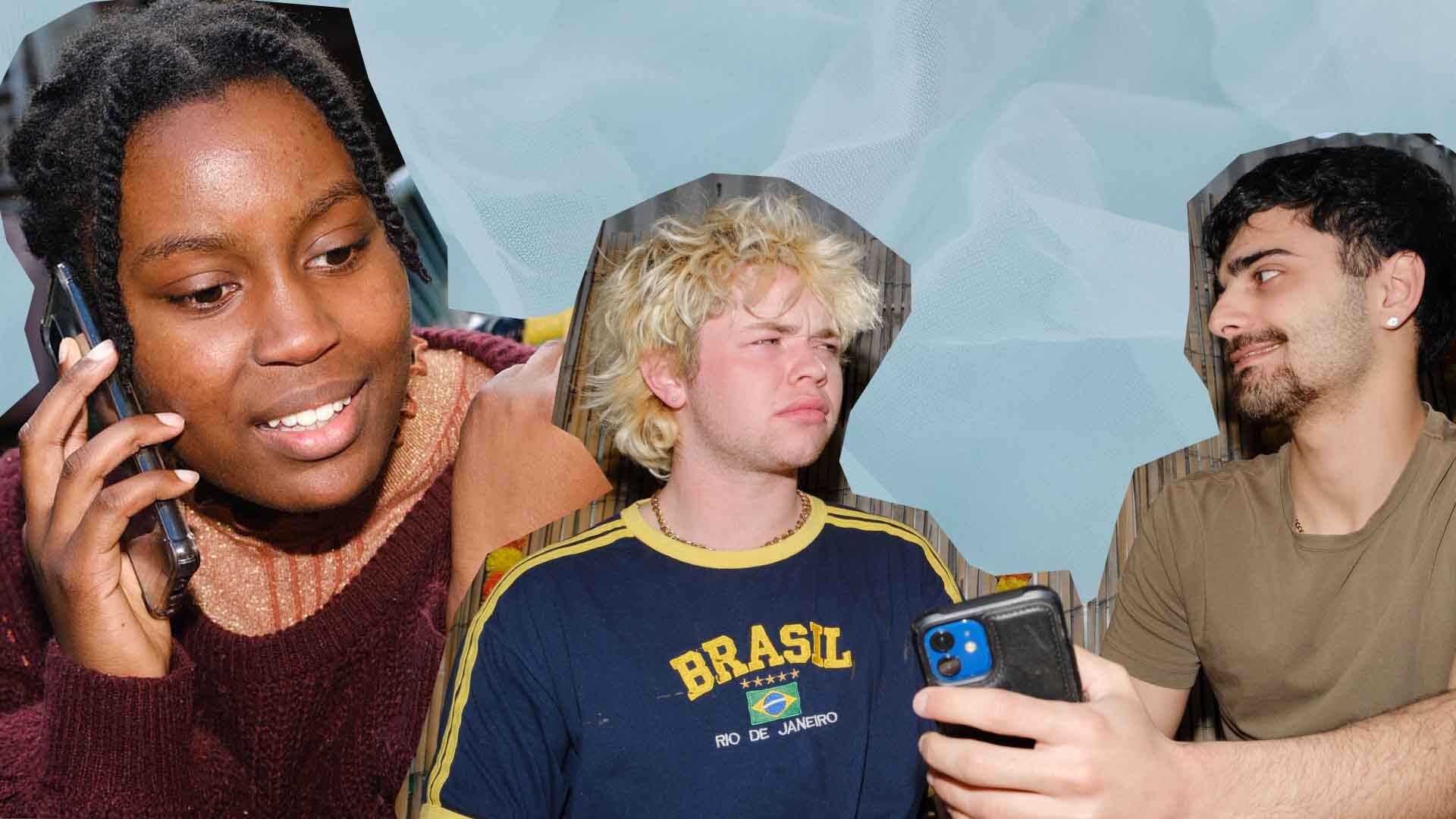There are lots of ways somebody can cross the line in a relationship. Here are some important ones to know.
[Content warning: this article discusses various forms of relationship violence, which may be traumatic to read about.]
How to Recognise Abusive Behaviour in Relationships
It could be name-calling, making threats, reading someone's text messages, telling them who they can or can't hang out with, pressuring them into sex, or being physically violent.
There are plenty of other ways, but basically crossing the line is any behaviour that makes someone feel intimidated, controlled, unsafe or disrespected.
There's no single version of violence, so it can take a lot of different forms.

But there are some types of violence that are super common that you should be able to recognise when you see them, whether it's in your own relationship or someone else's.
Here they are:
1. Control and coercion
Someone who is violent will often repeat the behaviour over a long time, forming a pattern of violent behaviour.
Violence can start in small ways in relationships and over time become more extreme forms of psychological/emotional, physical or sexual violence.
Sometimes, someone who is being violent might try to separate their partner from friends and family, so they have nowhere to turn to, for example:
- They might be rude to their partner’s friends, so their partner finds it harder to maintain their social connections.
- They might get angry or sulk when their partner goes out with other friends.
Controlling and coercive behaviour can take other forms, like:
- Criticising the way their partner looks, dresses or the things they say.
- Checking their text messages and emails to see who they speak to.
- Making threats to share intimate details or nude photos.
- Putting their partner down in front of other people or in private.
The point is that no experience of violence is the same. Violent partners use all sorts of ways to control someone they are in a relationship with and justify their violent behaviour.
It doesn’t matter how small the act seems, if it makes the other person feel frightened, intimidated or diminished, it’s wrong.

2. Jealous behaviour
Some people believe jealousy is a sign of real love, but it's not.
Using jealousy to justify controlling behaviour is bull$hit.
Things like isolating someone from friends, checking in on them way too much with constant calls, texts and emails or telling them who they can and can't hang out with are all controlling behaviours.
If you feel like reading a little more, check out this article about jealousy.
Jealousy is never an excuse for violent behaviour. There are no excuses for violent behaviour.
3. Physical violence
Physical violence is usually only one part of a pattern of violent behaviour.
Physical violence can take many forms, but can include:
- Slapping, hitting, punching, kicking.
- Pulling hair.
- Twisting arms.
- Restraining someone.
- Throwing objects at a person.

4. Emotional or psychological violence
Emotional or psychological violence can be extremely damaging, even though it might not be all that obvious.
Psychological violence can make someone feel frightened, lose their self-esteem and stand in the way of them getting help.
Psychological violence can include:
- Belittling, shaming or humiliating someone in public or private.
- Name-calling and attacking someone's character or personality.
- Minimising someone's achievements, devaluing their opinion, or taking credit for their success. For example, saying things like “you’d be nothing without me,” “what you think doesn’t matter”, or “you only got that job because of me.”
- Making threats to publish nude photos or share intimate details with other people.
- Making threats to hurt them, or people or 'things' they love.
- Stalking and harassing.
5. Sexual violence
Sexual violence can occur in personal relationships, family relationships, in workplaces, in schools, and in many other circumstances.
Sexual violence can include:
- Sexual harassment, for example, verbal street harassment, catcalling, staring, following someone, making unwanted/repeated requests for sex or a relationship.
- Sexualised bullying, for example, sending unwanted pornographic images to threaten or intimidate someone, threatening to share nude photos, making rape threats.
- Unwanted kissing or sexual touching.
- Sexual pressure and coercion, for example, making threats to break up if someone doesn't participate in sex, playing mind games to trick someone into unwanted sexual acts.
- Sexual assault, including rape.
You can learn all about consent by having a look at this article about consent.

6. Online abuse, image-based abuse and 'revenge porn’
Online abuse can take many shapes and forms.
They can include posting private images of someone, for example, in a sexual act or without their clothes, spreading lies about them, posting things to make them look stupid or bad.
Some people have called this type of abuse "revenge porn" in the past, but that doesn't really describe this type of abuse properly.
The word "revenge" can imply that victims have done something first to deserve the abuse.
Check out Dealing with online abusefor a full list of abusive online behaviours.
7. Rape myths and victim-blaming
Rape myths are false beliefs and attitudes that minimise, excuse or justify sexual violence.
Victim-blaming is when the victim of sexual violence is somehow blamed, rather than it being entirely the fault of the person who was abusive.
After hearing about a sexual assault, some people might ask, "why were they out alone at night?", "were they drunk?: or "what were they wearing?"
What they should really be asking is, "why did the person who was abusive act the way that they did?"

Here are some examples of rape myths and victim-blaming and why they're not true:
"It’s normal to call someone a slut or a skank."
This is known as slut-shaming, and it's crossing the line. No one deserves to be criticised for their sexual activity and no one ever deserves to be raped.
"People shouldn’t claim to have been sexually assaulted if they were drunk, affected by drugs or leading people on."
This is victim-blaming.
It doesn't matter if someone is drunk, alone, wearing headphones, whatever.
The only person to blame for sexual assault is the person who commits the assault.
"If someone is wearing sexy or revealing clothing they shouldn't be surprised it happened."
It doesn't matter what you wear, clothing is not an excuse for sexual violence.
"Some people say no when they really mean yes."
This is just not true. When someone says no, it always, always means no.
When we say someone should have protected themselves better, instead of putting all blame on the perpetrator, we can make victims of sexual assault believe that it’s their fault they were raped.
This is a huge obstacle to victims seeking help or telling someone what happened.
Reinforcing rape myths and victim-blaming contributes to a society that minimises, excuses and even condones violence against women.
To understand this better, have a look at our article 10 common myths about violence against women.
Hopefully, now you will be able to recognise violent and abusive behaviours when you see them.





